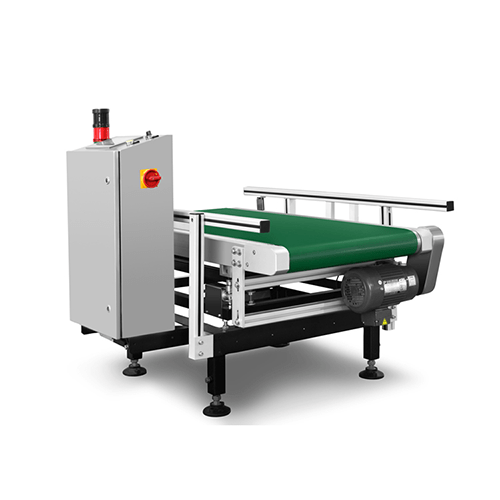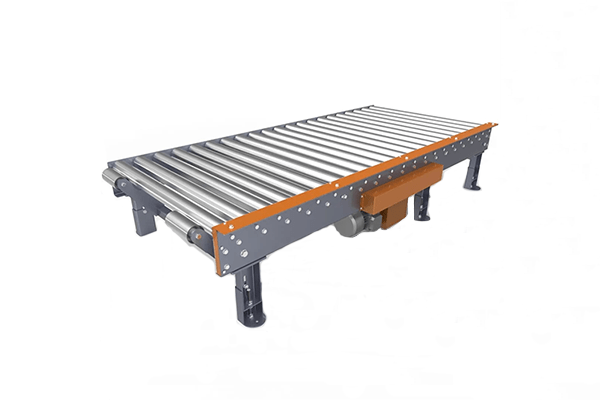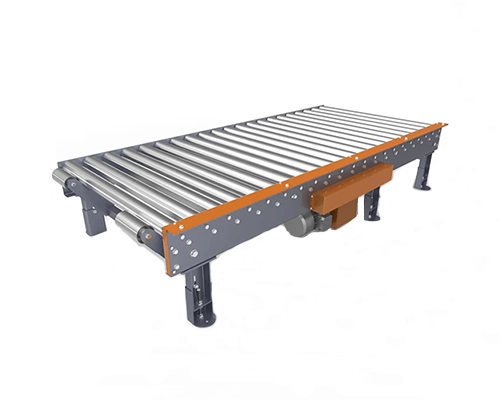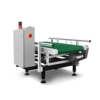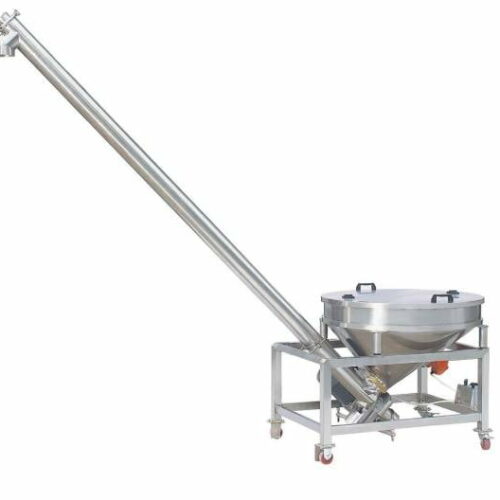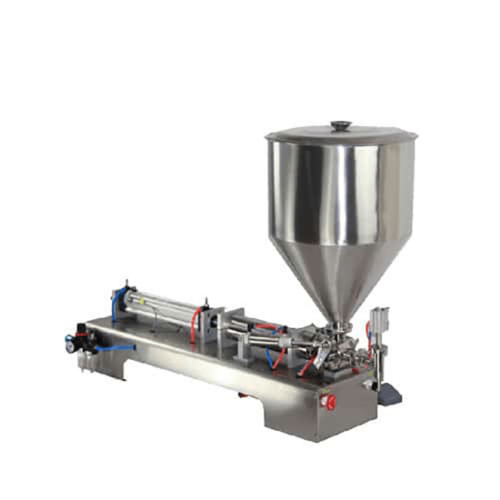List Technical Parameters of "Conveyor System"
A conveyor system is an essential piece of equipment in various industries, designed to facilitate the movement of materials from one location to another. Here are some key technical parameters that define the functionality and efficiency of a conveyor system:
1. Load Capacity: This refers to the maximum weight the conveyor can consistently handle without degradation, usually specified in kilograms or tons.
2. Speed: The conveyor belt's speed is typically measured in meters per minute (m/min) or feet per minute (ft/min) and impacts the throughput of the system.
3. Belt Material: The selection of belt material is crucial and depends on the type of material being transported, including rubber, PVC, and stainless steel.
4. Belt Width: Width varies to accommodate different material sizes and is measured in millimeters (mm) or inches.
5. Belt Type: Different types include flat, modular, and cleated belts, each suited for specific applications like accumulation or inclined transport.
6. Motor Specifications: Includes power ratings (typically in kilowatts or horsepower), type (AC or DC), and driving mechanism (gear-driven or direct-drive).
7. Frame Material: Common materials include stainless steel, aluminum, and carbon steel, chosen based on environmental conditions and load requirements.
8. Roller Diameter: Affects the transition and bends in a conveyor system, crucial for handling different loads.
9. Bearing Type: Influences the longevity and maintenance requirements of the system, with options like ball bearings or roller bearings.
10. Inclination Angle: Defines the angle at which the conveyor can transport materials without slippage, crucial for inclined or declined transport systems.
11. Temperature Range: The operational range within which the conveyor can function effectively, vital for processes involving heating or cooling.
12. Control System: Can be simple or complex, including PLCs (Programmable Logic Controllers) or manual controls for operation and monitoring.
13. Safety Features: Includes emergency stop switches, guards, and sensors to ensure safe operation.
14. Installation Footprint: Space required for installation, including length, width, and height, impacting facility layout.
Each of these parameters must be carefully considered during the design and selection process to ensure optimal performance, reliability, and safety of the conveyor system.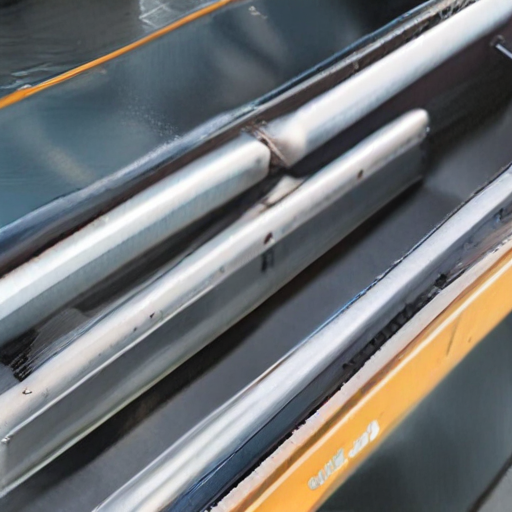
List Product features of "Conveyor System"
A conveyor system is an integral component in various industries, enhancing efficiency, reliability, and productivity. Here are some key features of a typical conveyor system:
1. Versatility
- Adaptable Configurations: Can be customized to fit various layouts, from straight paths to curves and inclines.
- Material Handling: Capable of transporting a wide range of materials including bulk, granular, and unit loads.
2. High Performance
- Speed Control: Adjustable speeds to match production requirements.
- Heavy-Duty Construction: Built to handle high loads and continuous operation.
- Durability: Made from robust materials like stainless steel and reinforced polymers to withstand harsh industrial environments.
3. Automation and Integration
- PLC Integration: Compatible with Programmable Logic Controllers for automated operation.
- Sensors and Monitoring: Equipped with sensors for tracking, sorting, and quality control.
- Inter-connectivity: Can be integrated with other machinery and systems for a seamless operation.
4. Safety and Ergonomics
- Guard Rails and Barriers: Prevent accidental falls and injuries.
- Emergency Stop Mechanisms: Quick-stop features for safety.
- Ergonomic Design: Reduces physical strain on workers through conveyor height adjustments.
5. Efficiency
- Energy Efficient Motors: Reduces power consumption and operational costs.
- Low Maintenance: Designed for minimal downtime with easily replaceable parts.
- Noise Reduction: Quiet operation, creating a more pleasant work environment.
6. Flexibility of Operation
- Modular Design: Easy to expand or reconfigure based on future needs.
- Portable Units: Some systems are designed to be mobile, allowing for quick relocation.
7. Environmental Benefits
- Eco-friendly Materials: Made from recyclable and environmentally friendly materials.
- Reduced Manual Labor: Minimizes human labor, reducing physical toll and associated injuries.
In summary, a conveyor system is a versatile, highly efficient, and reliable solution designed to meet the material handling needs of various industries while providing safety, easy integration, and environmental benefits.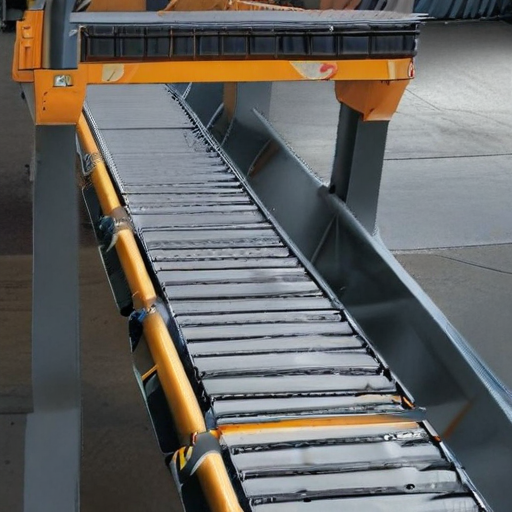
List Application of "Conveyor System"
Conveyor systems are widely utilized across various industries due to their efficiency in moving materials from one point to another. Here are some key applications:
1. Manufacturing: Conveyor systems streamline production processes by facilitating the movement of parts and components through different stages of assembly, improving efficiency and reducing manual labor.
2. Mining: In the mining industry, conveyors are used to transport extracted materials like ores, coal, and minerals, often over long distances and through challenging terrains, reducing transportation costs and operational downtime.
3. Food and Beverage: Conveyor belts are crucial in food processing plants for transporting raw materials, sorting, packaging, and distributing finished products, ensuring hygiene and consistency in product handling.
4. Automotive: Automotive manufacturers use conveyors for assembling vehicles, transporting parts like engines, transmissions, and other components through a series of production stages, enhancing accuracy and speed.
5. Warehousing and Distribution: In warehouses, conveyors facilitate the efficient movement of goods for receiving, sorting, storing, and shipping, improving order fulfillment and inventory management.
6. Airports: Baggage handling systems use conveyors to transport luggage from check-in counters through security screening to the boarding gates and onto the aircraft, streamlining the passenger experience.
7. Recycling: Recycling facilities use conveyor systems to segregate and transport recyclable materials such as plastics, metals, and paper, optimizing sorting and processing operations.
8. Pharmaceuticals: In pharmaceutical manufacturing, conveyors ensure the sterile and precise handling of products from production lines to packaging and distribution, complying with stringent industry standards.
9. Retail: Retail distribution centers use conveyors to facilitate the rapid movement and organization of products, enabling efficient sorting and delivery to stores and customers.
10. Agriculture: Conveyors aid in the handling, processing, and packaging of agricultural products like grains, fruits, and vegetables, improving productivity and reducing waste.
Overall, conveyor systems enhance efficiency, reduce manual labor, and optimize processes across diverse industries.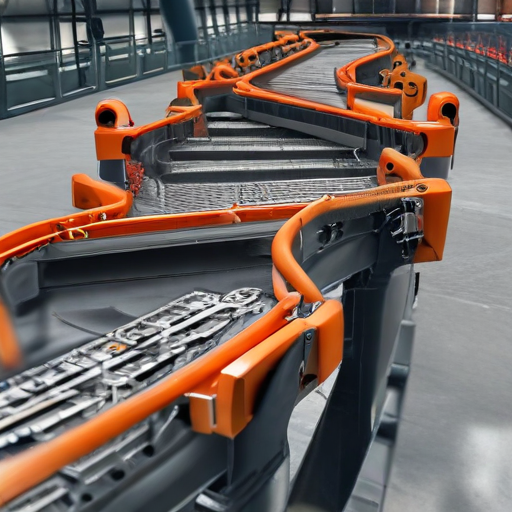
List Various Types of "Conveyor System"
Certainly! Conveyor systems are essential for handling materials in various industries. Here are several types:
1. Belt Conveyor:
- Flat Belt: Ideal for carrying lightweight items horizontally or slightly inclined.
- Cleated Belt: Equipped with barriers or cleats to prevent items from sliding backward.
2. Roller Conveyor:
- Gravity Roller: Utilizes the force of gravity for movement, suitable for non-powered zones.
- Powered Roller: Uses motors to drive rollers, facilitating easier movement of heavier items.
3. Chain Conveyor:
- Often used in automotive production lines, this system moves heavy products along the assembly line through linked metal chains.
4. Slat Conveyor:
- Comprises slats or plates connected to a chain, suitable for heavy-duty materials.
5. Pneumatic Conveyor:
- Utilizes air pressure or vacuum to move materials through tubes, ideal for lightweight and granulated products.
6. Bucket Conveyor:
- Has buckets attached to a belt or chain and is suitable for vertical lifting of bulk materials like grains or sand.
7. Screw Conveyor:
- Features a helical screw blade within a tube, commonly used for bulk materials like grains or chemicals.
8. Vibratory Conveyor:
- Uses vibration to move materials, often used in food processing and packaging.
9. Magnetic Conveyor:
- Designed for magnetic materials, using magnets to move metal objects along the conveyor.
10. Overhead Conveyor:
- Suspended from ceilings, allowing for transportation across workspaces without disrupting floor operations.
11. Flexible Conveyor:
- Adjustable and can be curved or expanded to fit custom layouts, good for temporary or mobile workspaces.
12. Ball Transfer Conveyor:
- Consists of a grid of ball bearings, allowing multi-directional movement, optimal for assembly lines and workstations.
By selecting the appropriate type of conveyor for specific applications, businesses can enhance efficiency, safety, and productivity.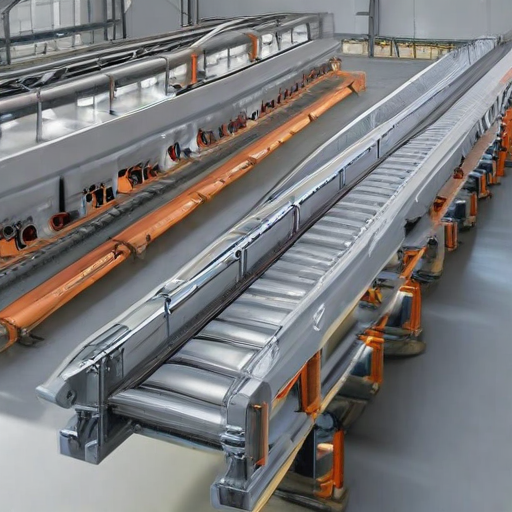
Custom Manufacturing Options for Conveyor System
Custom manufacturing options for conveyor systems can significantly enhance operational efficiency, suit specific industry needs, and address unique material handling challenges. Here are key customizations you can consider:
1. Design and Layout:
- Modular Design: Allows for flexibility and scalability. Units can be added or modified as needed.
- Custom Configurations: Inclines, declines, curves, and spirals to fit facility layouts.
2. Materials and Construction:
- Frame Material: Stainless steel for food and pharmaceuticals, carbon steel for heavy-duty applications, or aluminum for lightweight needs.
- Belt Material: Options include rubber, plastic, metal, and fabric, chosen based on durability, temperature resistance, and product type.
3. Drive Systems:
- Variable Speed Drives: Adjust speed for different product types and process requirements.
- Energy-efficient Motors: Reduce operational costs with high-efficiency motors.
4. Controls and Integration:
- Automated Controls: Integrate with PLCs (Programmable Logic Controllers) for synchronized operations.
- Sensors: Infrared, ultrasonic, or laser sensors for precise product detection and positioning.
5. Special Features:
- Sorting Mechanisms: Automated sorting based on size, weight, or barcodes.
- Cleaning Systems: Built-in CIP (Clean-in-Place) systems for hygiene-critical industries.
6. Safety and Compliance:
- Safety Guards and Covers: Essential for worker protection.
- Regulatory Compliance: Ensure adherence to industry standards such as FDA, OSHA, and others.
7. Environment and Specific Conditions:
- Temperature Control: Systems designed to operate in extreme temperatures.
- Dust and Corrosion Resistance: For harsh environments like mining or chemical processing.
By leveraging these customization options, a conveyor system can be tailored to match precise operational needs, enhance productivity, and ensure long-term reliability and safety.
List Quality Control and The Manufacturing Process of "Conveyor System"
Quality Control of Conveyor Systems
1. Material Inspection: Raw materials are inspected for quality, consistency, and compliance with specifications.
2. Component Testing: Components like motors, belts, and rollers undergo stress tests and performance evaluations to ensure durability.
3. In-Process Checks: During manufacturing, continuous checks are performed at various stages to identify and rectify defects.
4. Dimensional Accuracy: Ensuring the conveyors meet specified dimensions using precision tools and instruments.
5. Functional Testing: Complete systems are tested for load capacity, speed, and operational efficiency.
6. Safety Inspections: Ensuring all safety standards and regulations are met to prevent operational hazards.
7. Final Audit: A thorough final inspection before shipment ensures the finished product meets all quality standards.
Manufacturing Process of Conveyor Systems
1. Design and Planning: Initial phase involves CAD designs and simulations to plan out the conveyor system layout and components.
2. Material Procurement: Sourcing of high-quality raw materials such as metals, plastics, and electronic components.
3. Cutting and Shaping: Using CNC machines, laser cutters, or other tools to precisely cut and shape materials as per design specifications.
4. Fabrication: Welding, fastening, and assembling the various parts such as frame, rollers, and belts.
5. Component Integration: Installation of motors, sensors, and control systems onto the framework.
6. Surface Treatment: Treatments such as painting, powder coating, or galvanizing to protect components from wear and corrosion.
7. Assembly Line Testing: Systems are tested for functionality, load performance, and speed consistency on the assembly line.
8. Packaging and Shipping: Once approved, the conveyor systems are packaged securely and made ready for shipping to the client.
By incorporating stringent quality control measures at each stage of the manufacturing process, manufacturers ensure reliable and efficient conveyor systems.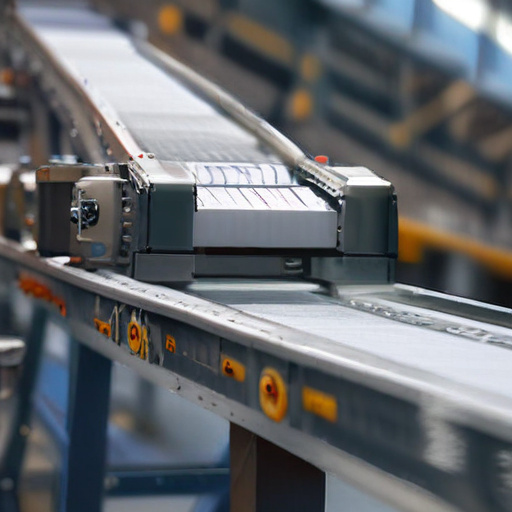
How to use "Conveyor System"
Using a conveyor system involves understanding its components, setup, and operation. Here's a concise guide:
Steps to Use a Conveyor System
-
Preparation
- Inspect: Ensure the conveyor is in good working condition with no visible damage.
- Safety: Wear appropriate personal protective equipment (PPE) and follow all safety protocols. -
Setup
- Power Check: Confirm the power source is connected and functional.
- Load Positioning: Place the items to be transported uniformly on the conveyor, avoiding overloading. -
Operation
- Starting: Switch on the conveyor using the control panel. Ensure it starts smoothly without unusual noises or vibrations.
- Monitoring: Keep an eye on the operation. Ensure that the load moves consistently without blockages or deviations.
- Adjusting Speed: Use the control panel to adjust the conveyor speed as needed for different types of loads. -
Handling Issues
- Blockages: If an item gets stuck, stop the conveyor immediately to remove the obstruction.
- Malfunctions: For mechanical issues, turn off the system and contact maintenance personnel. -
Shutting Down
- Power Off: Turn off the conveyor system using the control panel.
- Clean: Remove any debris or remaining items on the conveyor.
- Inspect: Perform a quick check to ensure the system is ready for the next operation.
Tips for Efficient Use
- Regular Maintenance: Lubricate moving parts and check for wear and tear regularly.
- Training: Ensure operators are well-trained and understand safety and operational protocols.
- Load Limits: Adhere to the recommended load capacity to avoid damage and ensure longevity.
By following these straightforward steps, you can efficiently and safely operate a conveyor system in various settings such as warehouses, manufacturing plants, or distribution centers.
List Properties and Terms of "Conveyor System"
A conveyor system is a mechanical handling apparatus used to transport materials or items from one location to another, commonly in manufacturing, warehousing, and distribution settings. Here are some key properties and terms associated with conveyor systems:
Properties
1. Capacity: Refers to the maximum load the conveyor can handle, often measured in weight or volume.
2. Speed: The rate at which materials or goods are transported; typically measured in feet per minute (FPM) or meters per second (m/s).
3. Length: The total distance the conveyor covers from the starting to the ending point.
4. Width: The width of the conveyor belt or rollers, affecting the size of items that can be transported.
5. Material: The construction material, such as steel, aluminum, rubber, or plastic, which influences durability and application.
6. Power Source: Electric motors, hydraulic systems, or manual mechanisms that drive the conveyor.
7. Incline/Decline: The angle at which the conveyor can operate, allowing for vertical transport.
8. Automation: Level of automation, including sensors, sorting, and control systems.
Terms
1. Belt Conveyor: Uses a continuous belt made of material like rubber or fabric to transport goods.
2. Roller Conveyor: Uses rollers to move items, often powered manually or by motors.
3. Chain Conveyor: Utilizes chains to move items, suitable for heavy materials.
4. Modular Conveyor: Composed of interlocking segments, allowing for easy customization.
5. Pallet Conveyor: Designed to move large pallets, commonly used in warehouses.
6. Screw Conveyor: Uses a rotating helical screw blade to move granular or semi-solid materials.
7. Bucket Elevator: A type of conveyor that carries materials in buckets attached to a belt or chain.
8. Overhead Conveyor: Suspended from the ceiling, typically used for assembly line processes.
9. Gravity Conveyor: Relies on gravitational force for movement, requiring no power.
10. Transfer System: Mechanisms to redirect or move items between different conveyor lines.
11. Drive Pulley: The main pulley that drives the conveyor belt.
12. Idler: Rollers that support the belt but do not drive it.
13. Hopper: A funnel-shaped container from which materials are fed onto the conveyor.
14. Cleat: Raised segments on a conveyor belt that help transport loose or small items.
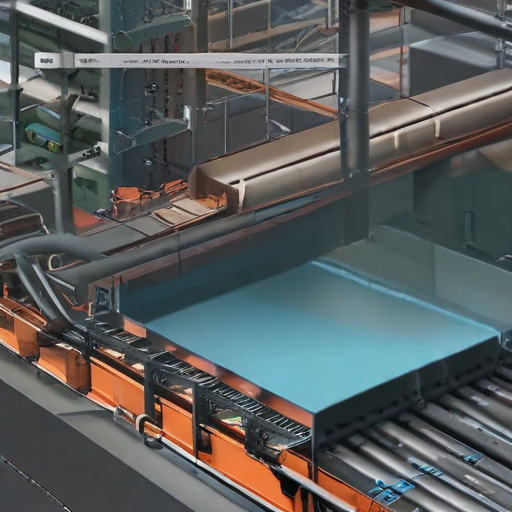
List The Evolution history of "Conveyor System"
The history of conveyor systems can be traced back to ancient times and has evolved significantly over the centuries. Below is a concise overview of their evolution:
1. Ancient Times:
- Early forms of conveyors were rudimentary and likely involved simple elements like logs and sledges to move heavy objects.
2. 18th Century:
- The industrial revolution marked significant advancements. In 1795, conveyors began to be used in mining, with assembly lines utilizing basic conveyor belts made from materials like leather and wood.
3. Early 20th Century:
- With the advent of mass production, conveyors became more sophisticated. Henry Ford revolutionized manufacturing with the automobile assembly line in 1913, using conveyor systems to speed up the process and improve efficiency.
4. 1920-1940s:
- The growing demand for coal fueled further innovation. Screw conveyors and conveyor belts made of rubber and cotton were introduced, enhancing durability and versatility.
- During World War II, conveyor systems played a crucial role in factories, improving production capabilities and efficiency.
5. Mid-20th Century:
- The 1950s and 60s saw the development of new materials such as synthetic fabrics and coatings, extending the lifespan and capabilities of conveyor belts.
- Modular designs and improved motor technology further refined conveyor systems.
6. Late 20th Century:
- The introduction of computer technology and automation transformed conveyors. Programmable Logic Controllers (PLCs) allowed for precision and reduced human intervention.
- Conveyor systems became integral in various industries, including parcel handling, food processing, and pharmaceuticals.
7. 21st Century:
- Modern advancements focus on sustainability, energy efficiency, and smart technology integration. Conveyors now feature advanced sensors and AI for real-time monitoring and maintenance.
- Developments in material science have led to the production of eco-friendly and recyclable conveyor belts.
In summary, conveyor systems have evolved from simple manual methods to highly sophisticated, automated machines that are crucial in modern industrial applications. This evolution continues to adapt to the growing demands of diverse industries.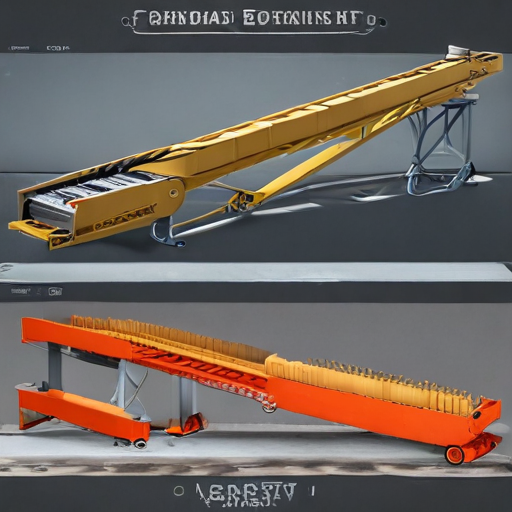
How to Select a Reliable Conveyor System
Selecting a reliable conveyor system involves several key considerations to ensure efficiency, longevity, and suitability for your specific needs.
1. Evaluate Material Characteristics: Understand the properties of the materials you’ll be moving: size, weight, abrasiveness, moisture content, etc. This helps in selecting the appropriate belt type and motor capacity.
2. Determine Throughput Requirements: Calculate the volume of material you need to move per unit time to select a system with the appropriate speed and capacity.
3. Consider the Environment: Assess environmental factors such as temperature, humidity, and exposure to chemicals. Certain conveyors are better suited for harsh or specific environments.
4. Assess Space Constraints: Ensure the conveyor fits within your available space. Consider modular and scalable systems if space is an issue.
5. Check Compatibility: Ensure the conveyor can integrate seamlessly with existing automated systems and machinery for smooth operations.
6. Focus on Maintenance and Durability: Look for systems with minimal maintenance requirements and components that are easy to replace. Durable conveyors made from high-quality materials will reduce downtime and long-term costs.
7. Safety Features: Prioritize systems with safety features like emergency stops, guards, and sensors to protect your workforce.
8. Vendor Reputation and Support: Choose reputable manufacturers with good reviews and reliable after-sales support. Ensure they offer warranties and readily available spare parts.
9. Energy Efficiency: Opt for energy-efficient motors and drives to reduce operational costs and support sustainability initiatives.
Taking these factors into account will help you select a reliable conveyor system tailored to your operational needs, ensuring efficiency and longevity while minimizing costs and downtime.
List "Conveyor System" FAQ
Conveyor System FAQ
-
What is a conveyor system?
A conveyor system is a mechanical handling apparatus used to transport materials from one location to another. They are commonly used in industries such as manufacturing, packaging, and logistics. -
What types of conveyor systems are there?
- Belt Conveyors: Utilize a belt to transport materials.
- Roller Conveyors: Use rollers to move items.
- Chain Conveyors: Operate using chains to move materials.
- Pneumatic Conveyors: Use air pressure to move bulk materials.
- Screw Conveyors: Employ a helical screw element to transport materials. -
What are the benefits of using a conveyor system?
- Efficiency: Swift transportation of goods.
- Safety: Minimizes manual handling and associated risks.
- Cost-Effective: Reduces labor costs and increases productivity.
- Flexibility: Can be customized to fit various operational needs. -
How do you maintain a conveyor system?
Regular inspections and maintenance are crucial. This includes checking for belt wear and tear, lubrication of moving parts, cleaning debris, and ensuring electrical components are operational. -
How do conveyor systems handle different materials?
Different conveyors are designed to handle specific types of materials. For example, belt conveyors are great for light to medium loads, while chain conveyors are suited for heavier goods. -
Are conveyor systems environmentally friendly?
Modern systems are increasingly being designed with energy efficiency in mind, incorporating features like low-energy motors and recyclable materials. -
How long does a conveyor system last?
The lifespan can vary based on usage, environment, and maintenance, but with proper care, they can last anywhere from 5 to 20 years. -
Can conveyor systems be automated?
Yes, many conveyor systems integrate with automated solutions like sensors, robotics, and control systems to optimize performance. -
What safety features are included?
Safety features often include emergency stop buttons, guardrails, warning signals, and regular safety audits. -
How much does a conveyor system cost?
Costs vary based on type, size, complexity, and customization needs. Basic models might start in the thousands, while specialized systems can range significantly higher.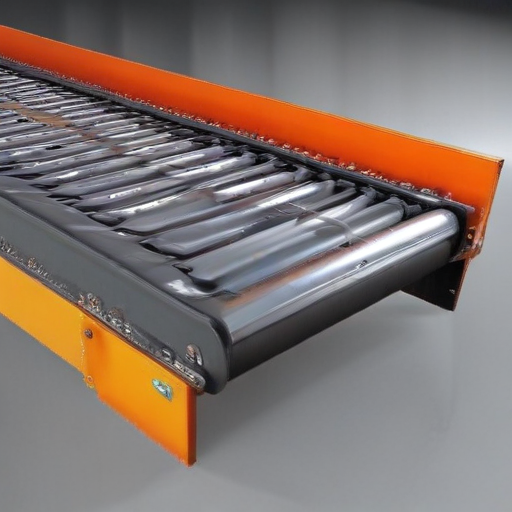
Top 10 FAQ with answer about Conveyor System for Buyer Sourcing from China
Sure, here are the top 10 frequently asked questions (FAQ) with concise answers for buyers looking to source conveyor systems from China:
-
What types of conveyor systems are available?
- China offers a variety of conveyor systems including belt conveyors, roller conveyors, chain conveyors, screw conveyors, and overhead conveyors, suitable for different industries and applications.
-
How do I choose the right conveyor system?
- Determine your needs based on material type, load capacity, speed, working environment, and specific requirements. Consulting with suppliers for tailored advice is crucial.
-
What is the average lead time for delivery?
- Lead times typically range from 4 to 12 weeks, depending on customization, order size, and supplier production capacity. Always confirm with the supplier.
-
Are there international quality certifications available?
- Many Chinese manufacturers comply with ISO, CE, and other international standards. Ensure the supplier provides relevant certifications for assurance of quality.
-
What are the payment terms usually offered?
- Common payment terms include T/T (Telegraphic Transfer), L/C (Letter of Credit), and sometimes Western Union for smaller amounts. Initial deposits of 30-50% are standard.
-
How is the shipping process managed?
- Shipping can be managed via FOB (Free On Board) or CIF (Cost, Insurance, and Freight) terms. Freight forwarders typically handle logistics. Choose reliable shipping services to ensure timely delivery.
-
What support is offered post-purchase?
- Most suppliers offer warranty periods ranging from 1 to 2 years. Spare parts and technical support are often available. Confirm after-sales support policies before purchasing.
-
How do I ensure the quality of the conveyor system?
- Request samples or visit manufacturing facilities if possible. Inspecting products and seeking third-party quality checks during production and before shipping is advisable.
-
Are customization options available?
- Most suppliers provide customization options to cater to specific needs, such as size, capacity, and additional features. Ensure clear communication of requirements.
-
How to handle language barriers and communication?
- Many suppliers employ English-speaking staff or use translation tools. Clear, concise communication through emails and video calls can mitigate misunderstandings.
By considering these FAQs, buyers can make more informed decisions when sourcing conveyor systems from China.

